News
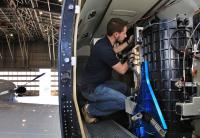
NASA Field Campaign to Probe Ocean Ecology, Carbon Cycle
NASA embarks on a coordinated ship and aircraft observation campaign off the Atlantic coast of the United States, an effort to advance space-based capabilities for monitoring microscopic plants that form the base of the marine food chain.

High-Flying Laser Altimeter to Check Out Summer Sea Ice and More
NASA’s high-flying laser altimeter begins a campaign to investigate differences between summer and winter sea ice.
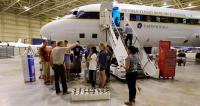
College Students Study Earth From NASA's DC-8 Flying Lab
Thirty-two undergraduate students are immersed in NASA's Earth Science research during the 2014 Student Airborne Research Program.
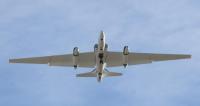
NASA ER-2 Aircraft Continues Earth Ecosystem Research
The second year of the HyspIRI airborne campaign on the high-altitude ER-2 is gathering data about the health of vegetation in six diverse areas.

NASA Widens 2014 Hurricane Research Mission
During this year's Atlantic hurricane season, NASA is redoubling its efforts to probe the inner workings of hurricanes and tropical storms with two unmanned Global Hawk aircraft flying over storms and two new space-based missions.

NASA IceBridge Concludes Arctic Field Campaign
Researchers with NASA's Operation IceBridge have completed another successful Arctic field campaign. On May 23, NASA's P-3 research aircraft left Thule Air Base, Greenland, and returned to Wallops Flight Facility in Virginia marking the end of 11 weeks of polar research.

NASA Airborne Research Focuses on Andean Volcanoes
Volcanoes in Central and South America were the targets of a NASA airborne synthetic aperture radar imaging mission in late April and early May 2014.
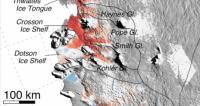
Loss of West Antarctic Glaciers Appears Unstoppable
A new study by researchers at NASA and the University of California, Irvine, finds a rapidly melting section of the West Antarctic Ice Sheet appears to be in an irreversible state of decline, with nothing to stop the glaciers in this area from melting into the sea.
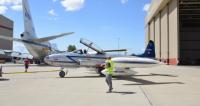
ACCESS II Alternative Jet Fuel Flight Tests Begin
NASA took to the skies to begin a series of flight tests to gather critical data that may aid in the development of cleaner aircraft fuels.
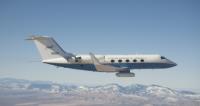
California Faults Moved Quietly After Baja Quake
A new NASA study finds that a major 2010 earthquake in northern Mexico triggered quiet, non-shaking motions on several Southern California faults.
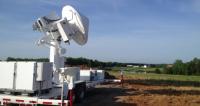
NASA Field Campaign to Measure Appalachian Rainfall
The weather of mountain regions -- rain, ice, hail, wind, fog -- is difficult to predict. A NASA field campaign in North Carolina aims to change that.

NASA Set to Premiere High-Flying Sequel
NASA researchers beginning in early May will take to the skies with a DC-8 and other aircraft to conduct a series of flight tests designed to study the effects on emissions and contrail formation of burning alternative fuels in jet engines.
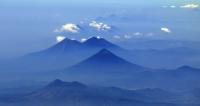
NASA Radar Imaging Mission Travels to Central and South America
NASA Earth Science mission is focusing on surface deformation near volcanos, forest structure, levees and subsidence in Central and South America.

C-23 Departs for 6-month Alaska mission
A C-23 Sherpa airborne science aircraft departed Wallops Flight Facility on a journey to conduct Earth science missions in Alaska from May to mid-November.
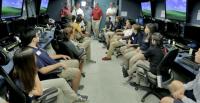
NASA Brings Science to Life in Guam Classrooms
In addition to doing cutting-edge atmospheric science, ATTREX team shared the excitement of their scientific mission with students, teachers in Guam.
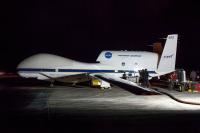
NASA Completes ATTREX Flights in Search of Climate Change Clues
Science flights from Guam during the Airborne Tropical Tropopause Experiment tracked upper atmosphere changes to help researchers understand how they affect Earth's climate.
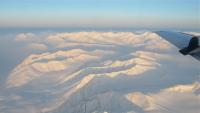
NASA's Operation IceBridge Begins New Arctic Campaign
Researchers aboard NASA's P-3 research aircraft left the agency's Wallops Flight Facility in Wallops Island, Va., March 10 for Greenland to begin a new season of collecting data on Arctic land and sea ice.
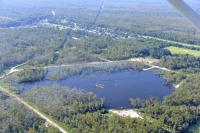
NASA Radar Demonstrates Ability to Foresee Sinkholes
New analyses of NASA airborne radar data collected in 2012 reveal the radar detected indications of a huge sinkhole before it collapsed and forced evacuations near Bayou Corne, La. that year.
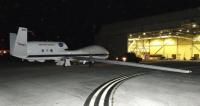
NASA Completes First ATTREX Science Flight from Guam
A lengthy science flight over Western Pacific tracked changes in upper atmosphere to help researchers understand how the changes affect Earth's climate.
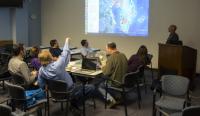
NASA IceBridge Science Team Plans for Future
Operation IceBridge's science team recently met at NASA's Goddard Space Flight Center to discuss the upcoming Arctic campaign schedule to start in March 2014.
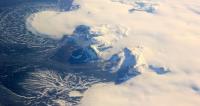
NASA Radar Maps the Winter Pace of Iceland’s Glaciers
A high-precision radar instrument from NASA's Jet Propulsion Laboratory, Pasadena, Calif., left Southern California for Iceland today to create detailed maps of how glaciers move in the dead of winter.

New Laser Technology Reveals How Ice Measures Up
New results from NASA's MABEL airborne campaign demonstrated that a photon-counting technique will allow researchers to track the melt or growth of Earth’s frozen regions.
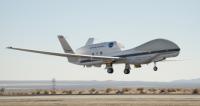
NASA Global Hawk Ready for 2014 ATTREX Mission
A NASA Global Hawk recently completed a checkout flight of science instruments to be used in the Airborne Tropical Tropopause Experiment.
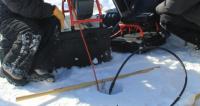
Enormous Aquifer Discovered Under Greenland Ice Sheet
Using data from NASA's Operation IceBridge airborne campaign, a large liquid water reservoir buried underneath compacted snow and ice in Greenland has now been mapped.
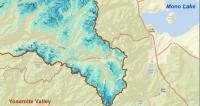
NASA Snow Mapper Reaps Big Benefits for California
A new NASA airborne mission has created the first maps of the entire snowpack of two major mountain watersheds in California and Colorado, producing the most accurate measurements to date of how much water they hold.
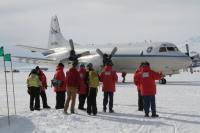
NASA Pilots Train for Antarctic Flying
Before IceBridge's Antarctic campaign, NASA P-3 research aircraft pilots and flight engineers got extra training that simulated landing and taking off on a sea ice runway.
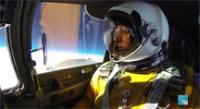
Airborne Science Program Trailer
The latest video on the ATTREX mission features footage taken at 70,000 ft from the ER-2 cockpit. This and other videos on the mission can be found at http://www.youtube.com/user/sciflychannel.

NASA Aircraft Collects Data On Earth's Ecosystems
NASA's ER-2 high-altitude research aircraft wrapped up the fall 2013 series of flights during the first week in December for the Hyperspectral Infrared Imager, or HyspIRI, airborne campaign.
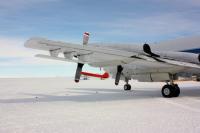
Airborne Radar Looking Through Thick Ice
The bedrock hidden beneath the thick ice sheets covering Greenland and Antarctica has intrigued researchers for years. Scientists are interested in how the shape of this hidden terrain affects how ice moves -- a key factor in making predictions about the future of these massive ice reservoirs and their contribution to sea level rise in a changing climate.
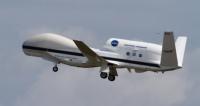
NASA's HS3 Hurricane Mission Highlights
NASA's Hurricane and Severe Storm Sentinel airborne mission known as HS3 wrapped up for the 2013 Atlantic Ocean hurricane season at the end of September, and had several highlights. HS3 will return to NASA’s Wallops Flight Facility in Wallops Island, Va., for the 2014 Atlantic hurricane season.
